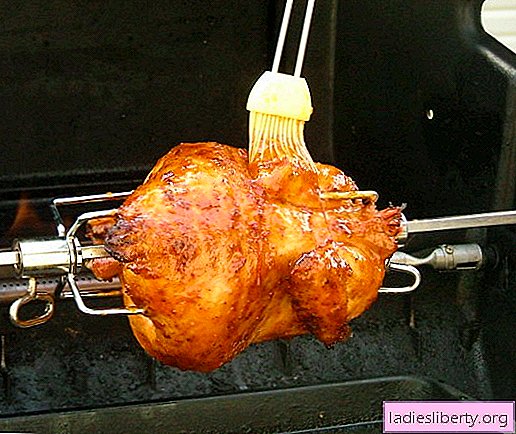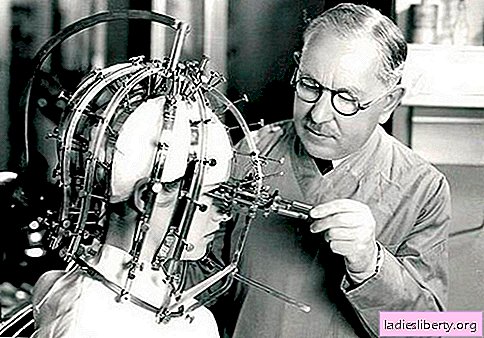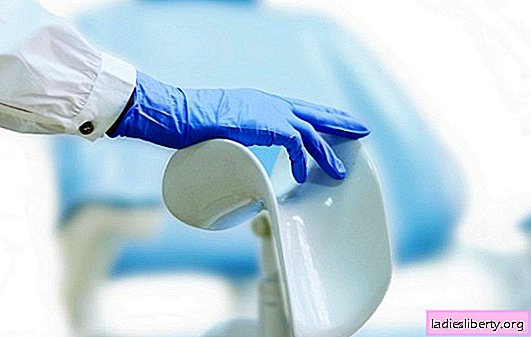
Cauliflower is an annual garden plant; it does not occur in the wild. Dietary vegetable was introduced to Russia more than 200 years ago. Today, cauliflower is cultivated not only by professionals, but also by simple summer residents. However, not knowing the intricacies of the agricultural technology of this culture, good yields cannot be obtained.
The basic rules for growing cauliflower in open ground
To obtain commodity inflorescences-heads that are rich in vitamins and minerals, it is important to know some of the features of the vegetable, and strictly observe agricultural techniques.

1. Cauliflower, like other varieties of culture, is prone to the accumulation of a large number of nitrates in the heads. To avoid this, you need to properly feed the seedlings. For the preparation of nutrient mixtures, only rotted manure or compost is used. The presence of fresh manure and a lack of potassium in the mixtures leads to the accumulation of nitrates.
2. Grow a vegetable in well-lit places. Thickened planting and non-compliance with the temperature regime contributes to the accumulation of nitrates in the heads.
3. Throughout the growing period, cabbage is demanding on soil moisture, so the garden should be regularly watered.
4. The best precursors for cauliflower will be legumes, tomatoes, potatoes and cucumbers. You can not plant a vegetable after cruciferous crops.
5. You can plant cabbage seedlings in one place for no more than three years, after which you should change the garden.
Cauliflower is grown in two ways - seedlings and sowing seeds in open ground, the latter is acceptable only for residents of the southern regions of the country. Mostly growing vegetables occurs through seedlings.
Preparing a Cauliflower Bed
This variety of cabbage is very demanding on the composition of the soil. You can get a good crop only on light nutrient soils that are able to retain moisture. The soil for planting cabbage is prepared in advance. In autumn, the bed is seasoned with rotted manure or compost at the rate of 10 kg per 1 sq. Km. square meter. It is best to apply fertilizer for digging the soil. It is made after harvest. Deep cultivation and large doses of organic fertilizers are the key to a good harvest in the coming season.
In addition to organics, cabbage needs mineral fertilizers. In the fall, under digging, the following drugs are added:
• 100 g of superphosphate;
• 120 g of potassium.
If desired, they are replaced by adding 1-2 kg of wood ash. For winter, the soil is not leveled, but left in boulders for better freezing. This contributes to the destruction of wintering pests.
In order to prevent the appearance of small non-commodity heads, in the fall, boron preparations are added for digging. To determine the lack of this element is simple: heads of cabbage are knitted loose, deformation of the leaves is observed, the heads often begin to rot from the inside.
If in the fall with digging the soil late, then the preparation of the beds should be done in the spring. At the beginning of the season make:
• 3-5 kg of humus;
• 100 g of urea;
• 100 g of double superphosphate;
• 20-30 g of magnesium sulfate;
• 120 g of potassium salt;
• 2 g of boric acid;
• 1.5 kg of wood ash.
The number of drugs is designed for 10 square meters. meters of beds.
How to grow healthy seedlings
When growing cabbage in a seedlingless way, the seeds are planted in moist soil in early May, when the soil warms up to 10 degrees. After emergence, the cabbage is dived and seated in the garden. Seeding depth is about 2 cm.
With growing seedlings will have to work hard. There are simple rules that will allow you to get strong and healthy seedlings.
1. Seedling cultivation begins in a heated room 60 days before the intended planting in the garden.
2. Before sowing, seed treatment is carried out. First they are kept in hot water (temperature up to 50 degrees) for about 20 minutes, after which they are placed in a container with cold water. Next, prepare a solution of trace elements (manganese + boron) and incubate cooled seed in it.
3. Before emergence in the room maintain a temperature of about 18 degrees. After which it is reduced to +10 during the day and +5 at night. After a week, the temperature is increased to +15 degrees. At this level, it is maintained until the seedlings are planted in the ground.
When growing seedlings in a common box, it is important to remember that the root system of cauliflower is weak. A week before planting it in the ground, the soil is cut into squares. This procedure helps the seedling to form a branched root system.
To get large heads of cauliflower throughout the season, many gardeners plant seedlings with a conveyor belt. Planting seedlings in the beds is carried out after the threat of frost.
Planting seedlings in open ground
Good seedlings of cauliflower before planting should have up to 4 developed leaves, a branched root system. Overgrown seedlings in the future will give small heads.
Photo full-fledged cauliflower seedlings

To grow cauliflower in the open ground, they begin by planting seedlings on beds. The optimal landing date is considered to be the beginning of May. But if there is a risk of return frosts, then seedlings need to be covered with a film.
The scheme for planting seedlings in the garden is as follows:
• the distance between the rows is about 50 cm;
• distance between seedlings up to 40 cm.

Plants in the hole are buried to cotyledonous leaves, tightly squeezed with earth. After planting, seedlings are well watered and shaded. Cruciferous flea often attacks freshly planted plants. To scare it away, ash or tobacco dust is used, which is sprinkled with beds of plants.
Care for cauliflower in the garden
Cauliflower needs regular plentiful watering and high humidity. In hot summers, without additional spraying, the heads are formed prematurely, moreover, they are small and tasteless. During the laying of the head, the plant is watered 5-8 times a week.
Top dressing
A few days after transplanting, it is fed with a solution of mineral fertilizers on a leaf. After 10 - 15 days, cabbage can be fed with the following mixture:
• ammonium nitrate - 15 g;
• superphosphate - 10 g;
• potassium chloride - 15 g.
A ready-made solution is watered planting on moist soil, after which the bed is loosened, slightly hilling seedlings.
The following dressing is carried out only after 20 - 25 days, increasing the dose of fertilizers in 1.5-2 times. The last time the cabbage is fertilized after 10 days from the third feeding.
Pest control
Cabbage is often affected by pests that slow down plant growth and markedly reduce yield. To scare away insects, infusions of tomato tops and potatoes are used, and seedlings are also sprayed with tobacco solution.
Cauliflower contains more vitamins than other types of cabbage. But the process of growing it is quite laborious. In order to prevent mistakes and get a good harvest, it is important to remember that cabbage is a long day plant. She needs warmth and enough light to tie commodity heads. Harvested as it ripens. Overgrown preparations change color to greenish and crumble. Cut off the ripe preparations you need along with the leaves. It is better to store cauliflower in frozen form, after dividing it into inflorescences. In the basement, it is not stored for a long time, it quickly fades and deteriorates. Experienced housewives prefer conservation from cabbage, which allows you to save maximum vitamins.











